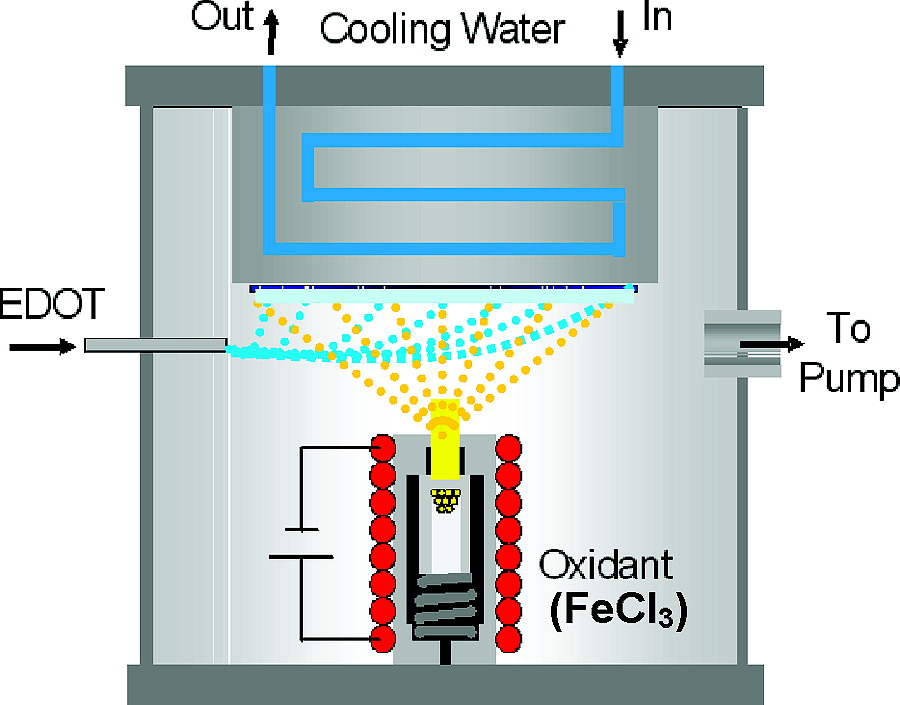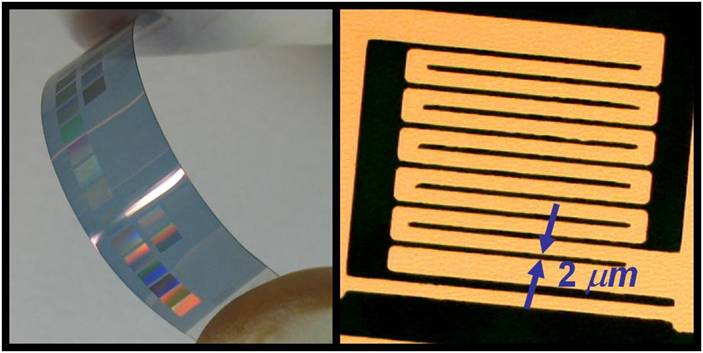oCVD

Oxidative Chemical Vapor Deposition (oCVD) can deposit various conducting polymer films, including poly (3, 4-ethylenedioxythiophene) (PEDOT), poly aniline, poly pyrrole, poly alkylthiophene, and functionalized poly thiophene. The properties of the polymer film can be controlled by tuning the deposition parameters. For example, the conjugation length, and therefore the electrical conductivity, can be tuned over six orders of magnitude by changing the substrate temperature.The highest achieved conductivity is about 1000 S/cm. In oCVD, the monomer flows into the reactor where it meets an oxidizing agent, beginning a step polymerization resulting in the conducting thin film.

With this simple one-step method, PEDOT films can be grafted on various kinds of organic substrates. Large increases in adhesion strength are consistently observed. With this grafting technique, nanometer-scale (down to 60 nm) PEDOT patterns can be obtained on flexible substrates. The electronically active conducting polymers can be applied to a variety of organic electronic devices. We are currently working to show that conducting polymer films can enhance the performance of organic solar cells and chemical sensors. Furthermore, organic light-emitting diodes and thin film transistors can be fabricated with this technique.


